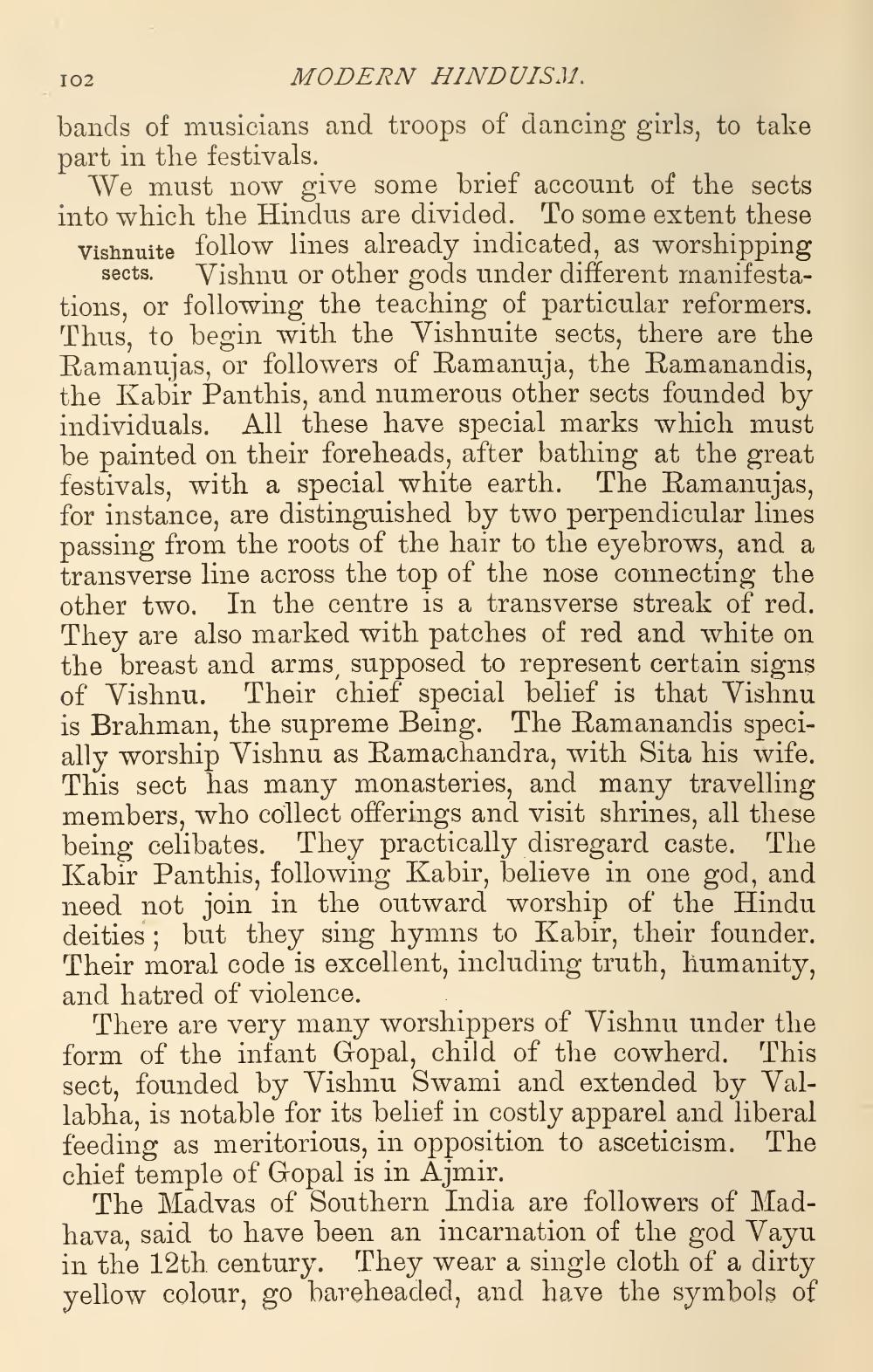________________
MODERN HINDUISM.
bands of musicians and troops of dancing girls, to take part in the festivals.
Vishnuite
We must now give some brief account of the sects into which the Hindus are divided. To some extent these follow lines already indicated, as worshipping sects. Vishnu or other gods under different manifestations, or following the teaching of particular reformers. Thus, to begin with the Vishnuite sects, there are the Ramanujas, or followers of Ramanuja, the Ramanandis, the Kabir Panthis, and numerous other sects founded by individuals. All these have special marks which must be painted on their foreheads, after bathing at the great festivals, with a special white earth. The Ramanujas, for instance, are distinguished by two perpendicular lines passing from the roots of the hair to the eyebrows, and a transverse line across the top of the nose connecting the other two. In the centre is a transverse streak of red. They are also marked with patches of red and white on the breast and arms, supposed to represent certain signs of Vishnu. Their chief special belief is that Vishnu is Brahman, the supreme Being. The Ramanandis specially worship Vishnu as Ramachandra, with Sita his wife. This sect has many monasteries, and many travelling members, who collect offerings and visit shrines, all these being celibates. They practically disregard caste. The Kabir Panthis, following Kabir, believe in one god, and need not join in the outward worship of the Hindu deities; but they sing hymns to Kabir, their founder. Their moral code is excellent, including truth, humanity, and hatred of violence.
102
There are very many worshippers of Vishnu under the form of the infant Gopal, child of the cowherd. This sect, founded by Vishnu Swami and extended by Vallabha, is notable for its belief in costly apparel and liberal feeding as meritorious, in opposition to asceticism. The chief temple of Gopal is in Ajmir.
The Madvas of Southern India are followers of Madhava, said to have been an incarnation of the god Vayu in the 12th century. They wear a single cloth of a dirty yellow colour, go bareheaded, and have the symbols of




